Early Bird
Deadline
January 31, 2026
Judging
Date
May 18, 2026
Winners
Announced
June 10, 2026
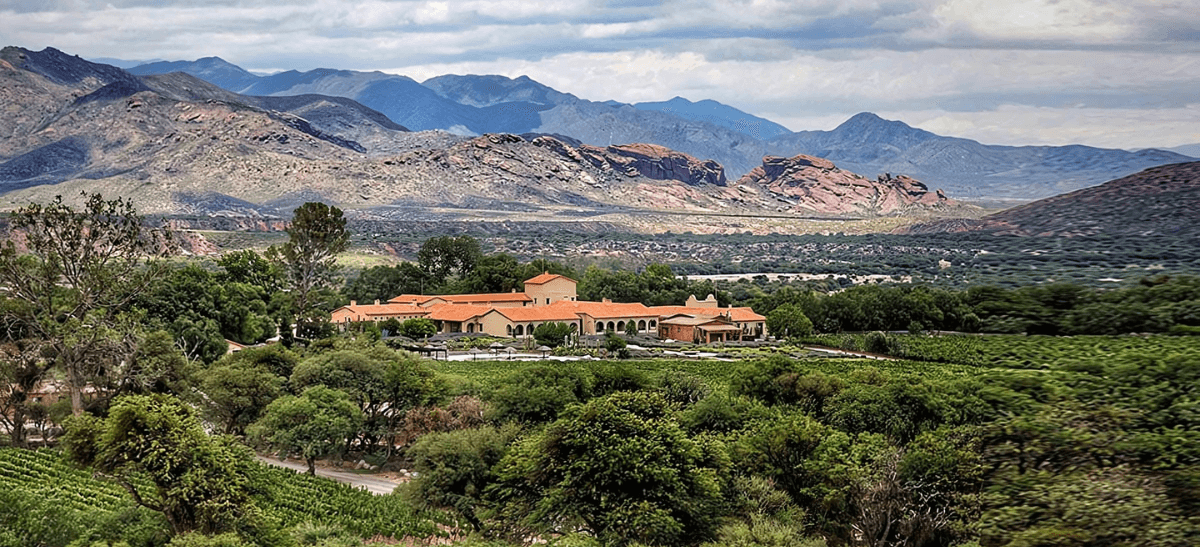
Argentina’s fame and international success seemingly rely on a single varietal wine: Malbec. As Eric Asimov at the New York Times put it a few years ago, “Argentina is known above all for malbec. This friendly red, most often in a rich style dominated by flavors of jammy fruit and oak, has become almost a generic brand.” He expressed a common experience within the on-premise community: “Consumers seeking an anonymous red wine ask for a glass of malbec.”
Perception and reality differ, however, and Argentina offers distinctive, superlative, and non-generic Malbec wines alongside many other captivating varietals and blends. More than varietal multiplicity, however, Argentina deserves recognition for its breathtaking geographical diversity in vineyard sites. As Wines of Argentina explains, “Located in wide valleys and on sloping plains, the wine regions form a strip at the foot of the Andes mountain range that extends from north to south, latitudes 23 ° to 45.5°.” Recently, pioneering winegrowers “have pushed the wine frontier to the West, into the heights, and to the South and East, looking for the cooler temperatures of the southern latitudes” or ocean influence. This includes the arid climes of Cuyo, the Patagonian plains, high-altitude vineyards in the North, and new projects on the edge of the Atlantic.
Also Read: An Interview with Magdalena Pesce, CEO of Wines of Argentina
So, wine from Argentina means much more than an average Mendoza malbec on the supermarket aisle. Sommeliers, wine directors, and distributors can, in fact, use the consumer recognition of generic Argentine Malbec to upsell premium wines that truly express a sense of distinctive place. Zane Holscher will be growing the awareness of the Argentina wine category via education and content on the Sommeliers Choice Awards
Editor Charlie Leary thus set out to discuss the French concept of “terroir” with leading figures at four Argentina wineries to delve into the latest trends regarding what terroir expression means in South America.
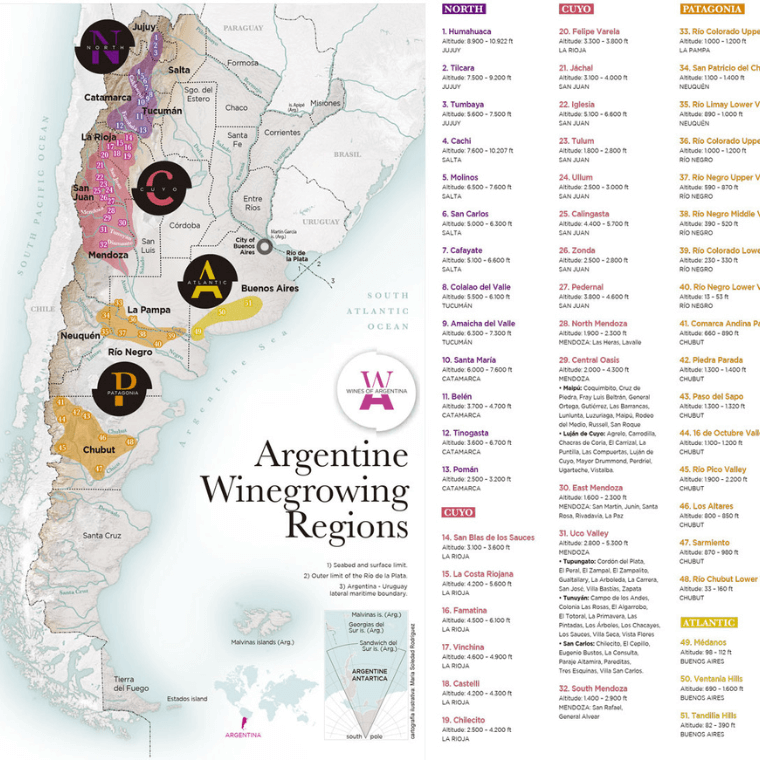
Image: Argentina Winegrowing Regions; Source: Wines of Argentina
This included Dr. Laura Catena, Managing Director of Bodega Catena Zapata in Mendoza; Dr. Ana Viola, CEO of Bodega Malma in San Patricio del Chañar, Neuquén, Patagonia; Thibaut Delmotte, Head Winemaker at Bodega Colomé in the Calchaquí Valleys of Salta province; and Carina Valicati, Marketing and Communication Director at Durigutti Family Winemakers of Luján de Cuyo, Mendoza. This list also helps highlight the important place of women in Argentina’s wine industry. Both Laura Catena and Ana Viola, in fact, are medical doctors who now lead not only their family wineries but also the national industry. Carina Valicati earned degrees in marketing, tourism management, and advertising, teaches university classes, and serves on the board of Wines of Argentina. Another standout is the Frenchman who tackled the country’s highest vineyard. Thibaut Delmotte has been making wine in Argentina since 2005 after graduating from Beaune, Bourgogne. One of Delmotte’s more unusual wines is his Riesling and Torrontes blend.
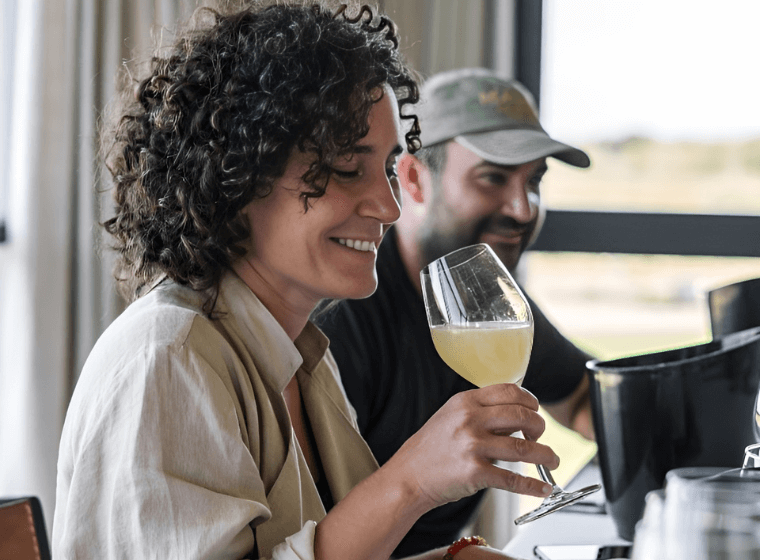
Image: Ana Viola; Source: Wines of Argentina
Ana Viola commenced by emphasizing that “in Argentina, the concept of terroir is much less defined than in France.” She related this to “the youth of some wine-producing regions, the vastness of the territory, and the diversity of influences and criteria in vineyard management. There is a clear and constant search for identity, along with continuous discovery through research, innovation, and exploration of new regions.” That may be an understatement, as Malma’s vineyards are located at 39º south with highly permeable soils where vine roots must struggle to find nutrients.
Malma works with different Malbec clones, but also Cabernet Sauvignon, Merlot, Sauvignon Blanc, Chardonnay, and, yes, Criolla and Pinot Noir. Appropriate to cool climes, the bodega has also produced a Cuvee Reserve Extra Brut from Pinot Noir and Chardonnay.
Viola’s perspective appropriately reflects Argentina’s vast size and geographic diversity, as well as the relative infancy of the export wine industry. She then gave a nod to the importance of allowing the vineyard site to express itself through an approach of low intervention from the winemaker. “In our case, we strive to ensure that the region's characteristics are expressed in the wine, with minimal interference in the winery. We allow the natural acidity, generated by the extreme temperature variations, as well as the colors, tannins, and polyphenols produced in the thickened skins from the wind and sun, to shine through.”
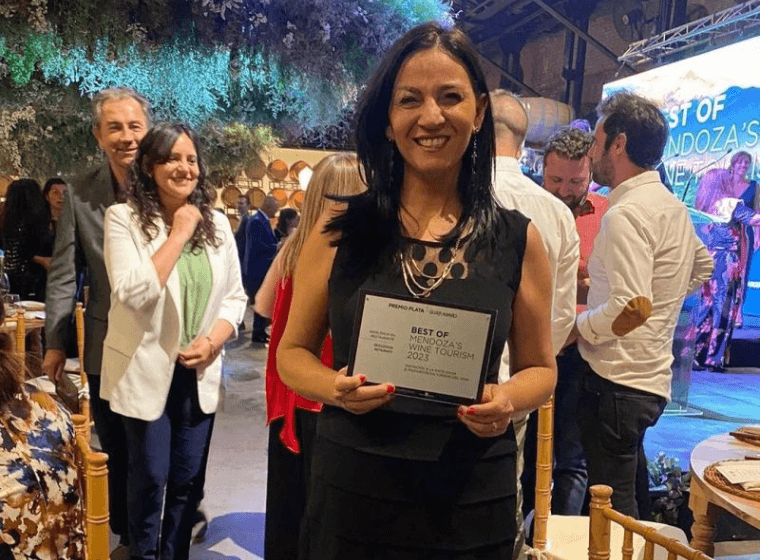
Image: Carina Valicati; Source: LinkedIn
Carina Valicati of Durigutti also gave a wholehearted embrace to terroir and its applicability to Argentina. “In the last 25 years, the overall increase in wine quality and the management of terroir have led to the creation of excellent and innovative products, derived from the unique expressions of specific vineyards, such as our own Finca Victoria, located in the Las Compuertas GI.” A Geographic Indication-level appellation in western Luján de Cuyo, up against the foothills, “Las Compuertas is one of its highest-elevation sub-regions and its vineyards are often on a slight incline,” says the South American Wine Guide. Durigutti makes Malbec there, but also wine from different expressive Criolla cultivars, Charbono, and Cordisco as well as a white blend.
More than Viola, Valicati believes that viticulture and winemaking must be used to enhance terroir. She thus has a different, more interventionist emphasis regarding terroir. She points out: “This concept of terroir has gone hand in hand with improvements in production techniques, particularly in vineyard management, with the learning of micro-parcel differentiation, understanding of various production areas, and enhanced interpretation of harvest times, all aimed at achieving freshness and highlighting each vineyard's unique identity.” Freshness is a theme that will be repeated by others, including Delmotte. “On the winemaking side,” Valicati says, “processes have improved through new technologies, and new, diverse preservation techniques have emerged, representing continuous learning. These advances allow the unique expression of grapes from each terroir to be maintained in a more personalized and distinct way. We believe that this ongoing learning process will further elevate Argentina's entire wine industry, especially its iconic wines.”
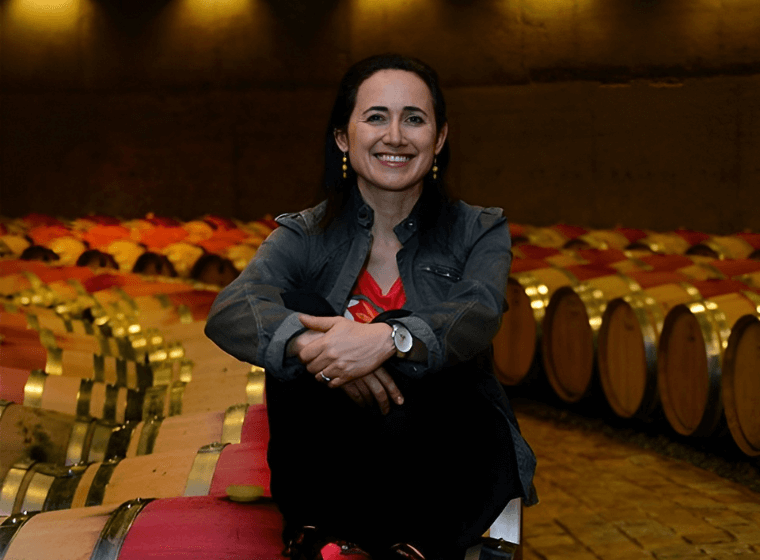
Image: Dr. Laura Catena; Source: Catena Zapata
Certainly, a producer of iconic wines, Laura Catena pointed out that “the most extensive and longest-lasting study on terroir ever conducted” took place in Argentina, not France, “as a research project of the Catena Institute of Wine.” The published results showed “that wines from certain Malbec terroirs in Mendoza have a specific chemical fingerprint and sensory profile (the terroir fingerprint was reproducible year after year over three years).” Catena Zapata produces renowned wines such as Nicolás Catena Zapata, Estiba Reserva, and Malbec Argentino involving intensive site, parcel, and vine selection. Catena also grows Bonarda for the wine Nicola Catena, all in Mendoza, the country’s most emblematic region.
She stated proudly that “although much has been said in France (where the word terroir originates) about the concept of a taste of place for wine, the study that definitively gave proof of concept for terroir, was conducted in Argentina.” She also discounted the assertions of a UC Davis Professor of Viticulture, Mark Matthews, “who wrote Terroir and Other Myths of Winegrowing with the thesis that terroir is a myth.” Catena counters that terroir has been established through experimentation. “At the Catena Institute of Wine, we have proven that terroir is not a myth and that it is reflected in the chemistry and taste of wines produced in certain vineyard parcels (or “parcelas” in Spanish).”
She then cut to the chase: “Yes, the concept of terroir is appropriate for some combinations of soil/plant selection/altitude/climate in Mendoza.” In fact, “an earlier study, a collaboration between the Catena Institute of Wine and UC Davis, showed that Malbec from different parts of California and Mendoza have their own chemical fingerprint and sensory profile. We were also able to demonstrate in subsequent published research that these chemical fingerprints of terroir remain over time.
“So, it would appear that terroir can be reflected in a certain vineyard parcel’s wine chemical fingerprint and that this individual terroir pattern persists over time.”
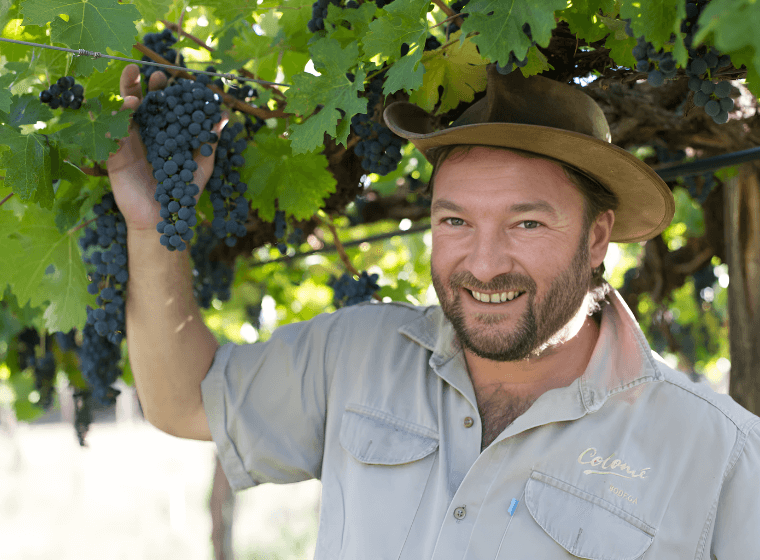
Image: Thibaut Delmotte: Source: La Nacion
While Catena in Argentina perhaps ironically helped scientifically establish the very French concept of terroir, Thibaut Delmotte provided the perspective of a French native, his perspective honed by experience in both Bourgogne and Bordeaux before he moved to South America. Bourgogne with its relatively tiny vineyard parcels—each with its own vinous identity—presents the initial inspiration for longstanding terroir expression. Delmotte helps manage some of the highest vineyards in the world and then makes their wines. He first emphasized climate: “The Calchaquí Valleys, sitting between 1,700 and 3,111 meters in elevation, have ideal conditions for grapevines: a dry climate (with an average of 150 mm of rainfall per year) and moderate temperatures.”
“At these elevations, there is a significant thermal amplitude (around 20°C difference between day and night), which allows for the development of intense fruity aromas and good freshness in the wines. Additionally, there is much more ultraviolet (UV) radiation than at sea level. To defend against this UV exposure, the fruit produces a darker and thicker skin, which gives us concentrated and structured wines.” In all, he has found that “the thermal amplitude gives us elegance and freshness, while the UV provides structure and concentration in our wines.” Next, however, Delmotte emphasized the critical element of soils, much in line with Catena’s scientific observations.
“After more than 10 years working with four terroirs at four different altitudes, we’ve realized that the soil naturally contributes to the differences.” He then gave concrete examples:
“In La Brava, Cafayate, we have 10 hectares at 1,700 meters. This is the warmest terroir, with sandy soil, producing wines with ripe fruit notes and soft tannins due to the temperatures, while remaining fruity and simple due to the soil.
“At Colomé (2,300 meters), where most of our vineyards are located (70 hectares), the soil is highly complex, with sandy, clayey, and alluvial components. This complexity is reflected in the wines: black fruit, spices, volume on the palate, and rounded tannins. This is our most generous terroir, providing persistence and volume to our wines.
“At El Arenal (2,600 meters and 45 hectares), we have a more open valley, exposed to constant sun and wind. The soil here is also very sandy. These characteristics give us an elegant wine (red fruit, floral, and mineral), vibrant and structured, which adds great life to our blends. Generally, sandy soils produce simpler wines, but in this case, the altitude adds much complexity.
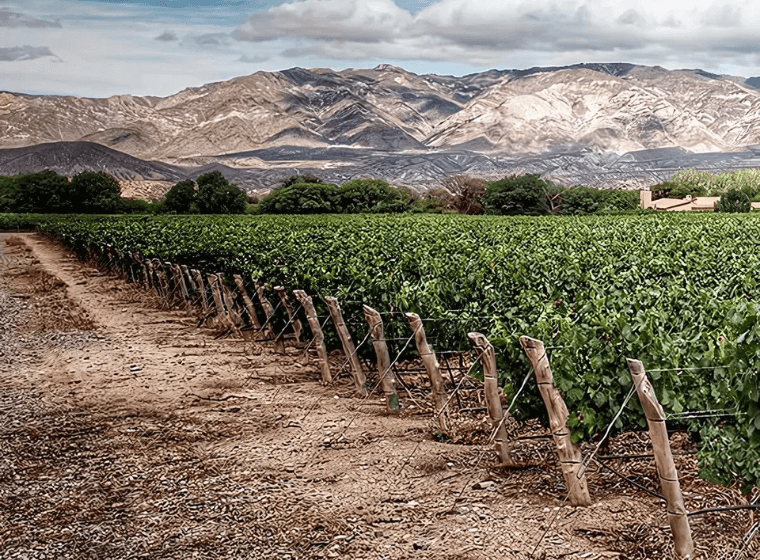
Image: Altura Maxima
“Finally, we have 25 hectares at Altura Máxima, at 3,111 meters, where the days and nights are even cooler, and the soil is very rocky, unique in the valley, with gray and pink granite and volcanic stone that impart minerality and freshness, combined with fruitiness and floral notes due to the altitude.”
Many people associate Argentina wines with Malbec fruit bombs, but obviously this is an attitude that deserves much greater nuance. Delmotte said, “It’s common to think that the higher you go, the more concentrated and ‘powerful’ the wine will be,” and then pointed out that’s not necessarily true. Terroir may not follow the most common preconceptions. It takes local knowledge, which points to the human element in terroir’s definition. Focusing on “less overripe wines” and “aiming for a fresher point of ripeness without being underripe,” Argentina’s extremely high altitude sites show “that freshness and elegance prevail over concentration and tannins. They give us wines that are very delicate on the nose (floral, mineral, red fruit), vibrant on the palate with good structure, but with fine tannins.”
[[relatedPurchasesItems-61]]
In discussing terroir with these four experts, a vivid picture emerges of Argentina's growing regions—each unique, from the sun-soaked plains of Luján de Cuyo to the windswept vineyards of Patagonia and the high-altitude extremities of the Calchaquí Valleys. These diverse landscapes and climates contribute to a wide range of wine styles that go beyond the common perception of Argentine Malbec as a powerful, fruit-driven wine. Instead, the country's top producers highlight a deep connection to place, shaped by the natural environment and human craftsmanship. As Argentina's wine industry matures further, its exploration of terroir will push additional boundaries, offering wine lovers the opportunity to experience distinct and nuanced expressions of the land. This narrative of discovery and innovation ensures Argentina’s place at the forefront of the global wine conversation, with much more to offer than a single varietal from a single appellation.
Part Two of the conversation will delve into how each winery manages and markets Argentine terroir.
Header Image: Bodega Colomé; source: Colomé
Also Read:
How To Get Your Wine Brand Ready For USA and Find A Wine Importer
Argentina Unveiled: Discover Her Best-Kept Wine Secrets
Drinks Business Education Webinars By Sommeliers Choice Awards
Enter your Wines now and get in front of top Sommeliers, Wine Directors, and On-Premise Wine Buyers of USA.
